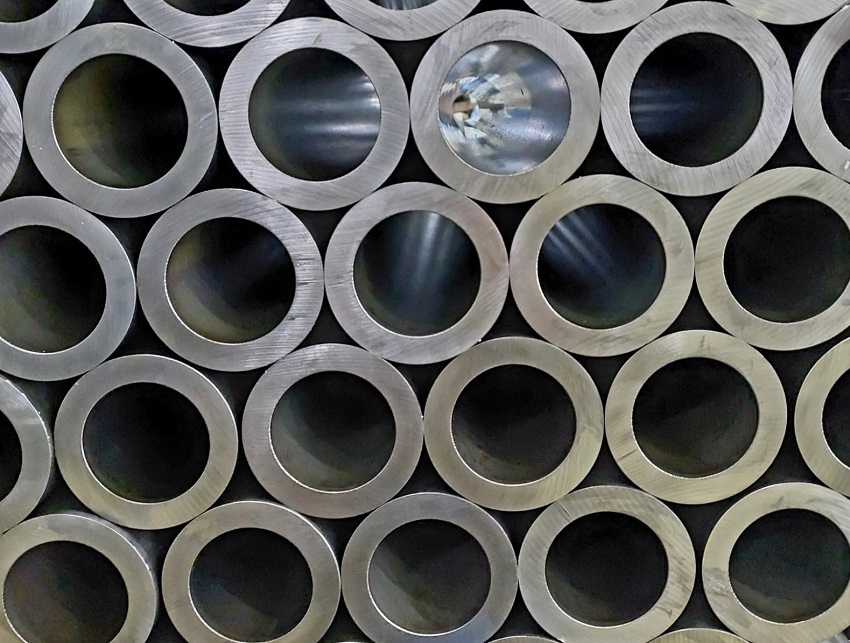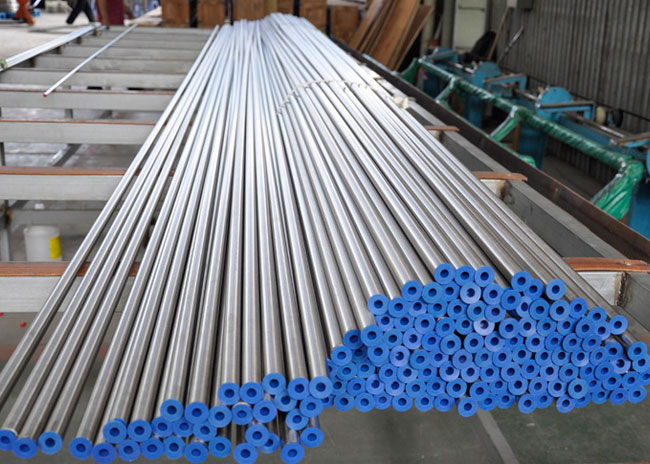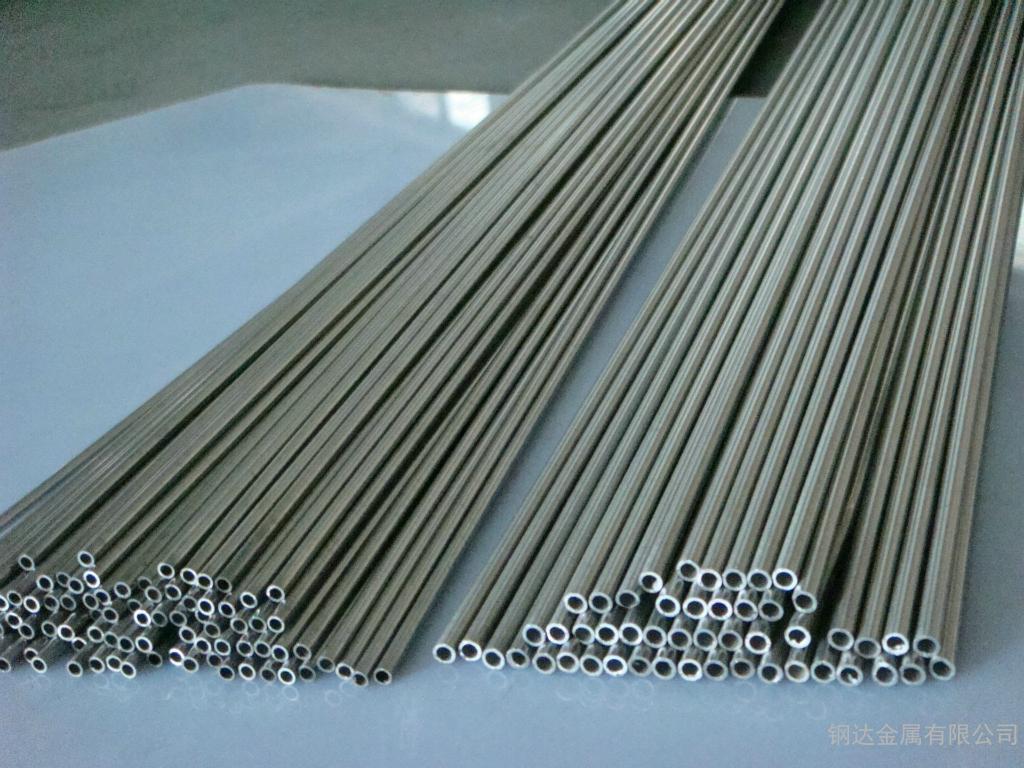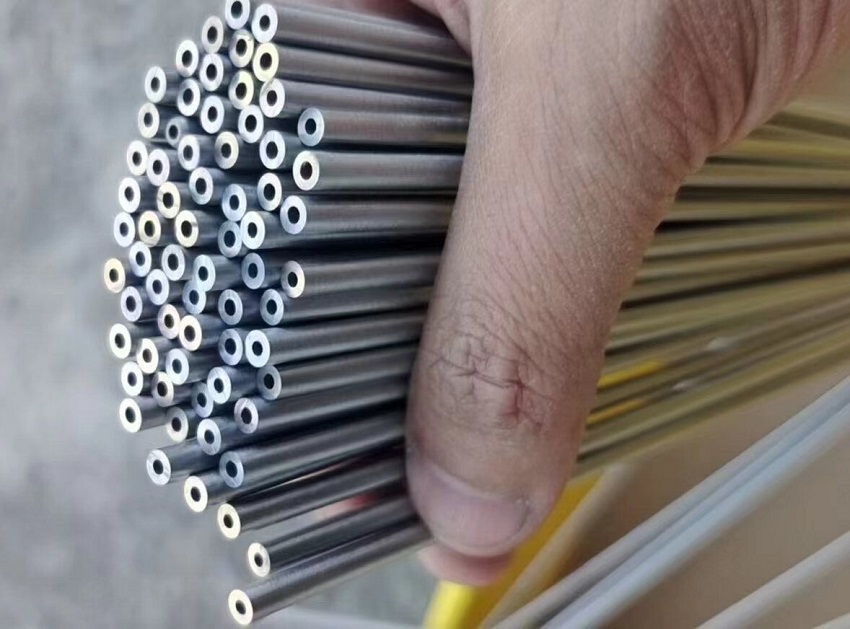NEWS CENTER
Precision Steel Tubes for Hydraulic and Pneumatic
Precision steel tubes for hydraulic and pneumatic applications are high-quality, seamless tubes designed to meet the stringent requirements of fluid power systems. These tubes are manufactured with tight tolerances and superior surface finishes, ensuring optimal performance in high-pressure environments. They are essential components in hydraulic and pneumatic systems, providing reliable fluid transmission with minimal risk of leakage or failure. These precision tubes are widely used in industries such as automotive, construction, and machinery, where durability, efficiency, and safety are paramount.
1. Precision Steel Tubes Material Quality:
Precision steel tubes are often made from high-quality materials such as carbon steel or alloy steel. The choice of material depends on the specific requirements of the application.
2. Precision Steel Tubes Tolerances and Dimensions:
These tubes are manufactured with tight tolerances to ensure uniformity and consistency. The precise dimensions are crucial for maintaining the integrity and performance of hydraulic and pneumatic systems.
3. Precision Steel Tubes Surface Finish:
Precision tubes typically have a smooth surface finish, which is important for reducing friction and ensuring efficient fluid flow within the system.
Precision steel tubes can feature various surface finishes depending on the intended application and manufacturing process. Some common surface finish types for precision steel tubes include:
3.1. Smooth Finish:
Achieved through processes like cold drawing or cold rolling, a smooth surface finish is characterized by a uniform and polished surface. This finish is ideal for applications requiring low friction and excellent corrosion resistance.
3.2. Bright Annealed Finish:
This finish involves annealing the steel tube in a controlled atmosphere to eliminate surface imperfections and achieve a bright, reflective surface. Bright annealing improves surface smoothness and enhances corrosion resistance.
3.3. Electropolished Finish:
Electropolishing is an electrochemical process that removes surface imperfections and contaminants, resulting in a smooth, shiny finish with enhanced corrosion resistance. It is commonly used in applications requiring high cleanliness and aesthetic appeal.
3.4. Mechanical Polished Finish:
Mechanical polishing involves using abrasive materials to remove surface irregularities and achieve a smooth finish. This finish is suitable for applications where a high level of surface smoothness is required but may not offer as high a level of corrosion resistance as electropolishing.
3.5. Pickled Finish:
Pickling involves immersing the steel tube in an acid solution to remove surface scale, oxides, and contaminants. The resulting finish is matte and uniform, suitable for applications where aesthetics are not critical but corrosion resistance is essential.
4. Precision Steel Tubes Seamless Construction:
Many precision steel tubes used in hydraulic and pneumatic applications are seamless. Seamless tubes are preferred in systems where pressure and fluid integrity are critical.
5. Precision Steel Tubes Resistance to Corrosion:
Precision steel tubes are frequently subjected to treatments or coatings aimed at bolstering their resistance to corrosion, thereby extending their service life and reliability across diverse environmental conditions. Methods employed include galvanization through hot-dip or electro processes, electroplating with metals like nickel or chromium, phosphating to apply a protective phosphate layer, anodizing to enhance oxide layers, application of organic coatings such as paints or varnishes, powder coating, epoxy coatings for durable protection, ceramic coatings for high-temperature and harsh environments, cathodic protection utilizing sacrificial anodes, and passivation treatments particularly for stainless steel tubes. These techniques collectively create barriers or alter surface properties to inhibit corrosive processes, ensuring precision steel tubes maintain their structural integrity and functionality over extended periods.
6. Precision Steel Tubes High Pressure Applications:
Hydraulic and pneumatic systems often operate under high pressure. Precision steel tubes are designed to withstand these high-pressure conditions without compromising safety or performance. Testing and certification play a crucial role in ensuring the quality, safety, and compliance of precision steel tubes with industry standards and regulatory requirements. Here are some common testing methods and certification processes associated with precision steel tubes:
6.1. Dimensional Inspection:
Precise dimensional measurements are essential to ensure that precision steel tubes meet specified tolerances for outer diameter, inner diameter, wall thickness, length, and other critical dimensions. Dimensional inspection involves using calibrated instruments such as micrometers, calipers, and gauges to verify compliance with dimensional specifications.
6.2. Mechanical Testing:
Mechanical testing assesses the mechanical properties of precision steel tubes, including tensile strength, yield strength, elongation, hardness, and impact resistance. Common mechanical testing methods include tensile testing, hardness testing (e.g., Rockwell or Brinell hardness), and Charpy impact testing. These tests help ensure that the tubes possess the required strength and toughness for their intended applications.
6.3. Chemical Analysis:
Chemical analysis determines the chemical composition of the steel used in precision tubes, including the concentrations of alloying elements and impurities. Techniques such as spectrometry or chemical titration are employed to verify compliance with material specifications and standards.
6.4. Non-Destructive Testing (NDT):
Non-destructive testing methods are used to detect internal and surface defects in precision steel tubes without causing damage to the material. Common NDT techniques include ultrasonic testing (UT), eddy current testing (ECT), magnetic particle testing (MPT), dye penetrant testing (PT), and radiographic testing (RT). These tests identify defects such as cracks, voids, inclusions, and discontinuities that may affect the integrity and performance of the tubes.
6.5. Surface Inspection:
Surface inspection involves visually examining the external surface of precision steel tubes for defects such as scratches, pits, corrosion, or surface contamination. Surface inspection helps ensure that the tubes meet specified surface finish requirements and aesthetic standards.
6.6. Pressure Testing:
Pressure testing assesses the ability of precision steel tubes to withstand internal pressure without leaking or rupturing. Hydrostatic pressure testing involves pressurizing the tubes with a liquid (e.g., water or oil) to a specified pressure level and monitoring for leaks or deformation. Pressure testing ensures the integrity and safety of the tubes for applications involving fluid or gas containment.
6.7. Certification and Compliance:
Precision steel tube manufacturers often obtain certifications from regulatory bodies, industry organizations, or third-party certifying agencies to demonstrate compliance with quality standards and specifications. Common certifications include ISO 9001 (quality management system), ISO 14001 (environmental management system), ASTM (American Society for Testing and Materials), ASME (American Society of Mechanical Engineers), EN (European Norm), and various national standards.
7. Precision Steel Tubes Customization:
Manufacturers may offer customization options such as different sizes, wall thicknesses, and lengths to meet the specific needs of different applications.
8. Precision Steel Tubes Testing and Certification:
To ensure the quality of precision steel tubes, they undergo rigorous testing and may be certified according to industry standards. Common tests include dimensional checks, pressure testing, and material analysis.
9. Precision Steel Tubes Applications:
Precision steel tubes are widely used in various industries, including automotive, aerospace, machinery, and manufacturing, where hydraulic and pneumatic systems are employed.
10. Precision Steel Tubes Standard Compliance:
Manufacturers of precision steel tubes adhere to stringent industry standards and regulations to ensure their products meet safety and performance requirements. Compliance with standards such as ISO 9001 for quality management, ISO 14001 for environmental management, and specific technical standards like ASTM A519, EN 10305-1, and DIN 2391 ensures that these tubes meet precise dimensional accuracy, mechanical properties, and material quality. Adhering to such standards guarantees the tubes reliability, durability, and suitability for demanding hydraulic and pneumatic applications, thereby ensuring optimal performance and safety in various industrial settings.

Precision Steel Tubes for Hydraulic and Pneumatic
请输入搜索关键字
确定






